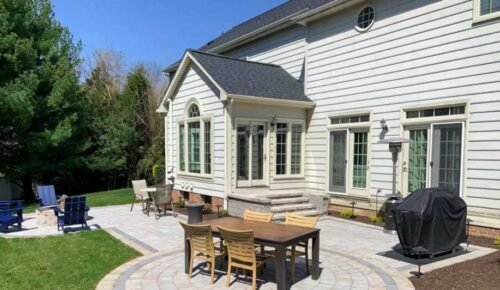When considering walkway design, it’s crucial to balance aesthetics with practicality. A well-designed walkway not only enhances the beauty of the landscape but also ensures the safety and comfort of those who use it.
By incorporating thoughtful design features, you can create pathways that are easy to navigate, reduce the risk of accidents, and provide a pleasant walking experience.
This article will delve into various elements that contribute to safe and comfortable walkways, ensuring they are both functional and aesthetically pleasing.
Clear Pathways and Ample Space
One of the primary considerations in walkway design is ensuring clear and unobstructed paths. Walkways should be wide enough to accommodate multiple users, including those with mobility aids such as wheelchairs or strollers.
A minimum width of 1.5 metres is recommended for most pathways, with wider sections in areas of high foot traffic. Clear signage and well-marked routes also help guide users, making navigation easier and more intuitive.
Surface Material and Maintenance
The choice of surface material plays a critical role in both safety and comfort. Slip-resistant materials, such as textured concrete, brick, or rubber, provide secure footing and reduce the risk of falls, especially in wet conditions.
Regular maintenance is essential to keep walkways in good condition, free from cracks, loose stones, or other hazards. In colder climates, ensure that pathways are regularly cleared of snow and ice to maintain safe access.
Proper Lighting
Adequate lighting is vital for walkway safety, particularly in areas used during evening hours. Well-lit pathways reduce the risk of trips and falls, and also enhance the sense of security for users.
Consider using energy-efficient LED lighting, which provides bright illumination and is cost-effective. Solar-powered lights are an eco-friendly option that can further reduce energy costs.
Weather Protection
Providing shelter along walkways can greatly improve user comfort, especially in regions with unpredictable weather. Covered walkways or strategically placed canopies protect users from rain, snow, and excessive sun.
Using clear polycarbonate twinwall for these structures is an excellent choice, as it is durable, lightweight, and provides effective weather resistance without obstructing natural light.
Comfortable Seating Areas
Incorporating seating areas along walkways offers users a place to rest and enjoy their surroundings. Benches should be placed at regular intervals, especially in longer pathways or areas with scenic views.
Comfortable, ergonomically designed seating encourages users to take breaks, making the walkway more user-friendly for people of all ages and abilities.
Accessibility Features
Ensuring that walkways are accessible to everyone, including individuals with disabilities, is a key aspect of inclusive design.
Ramps with gentle slopes, tactile paving for visually impaired users, and clearly marked crossings all contribute to a more accessible environment.
Handrails and guardrails provide additional support and safety on slopes and elevated pathways.
Landscaping and Aesthetics
While safety and functionality are paramount, the visual appeal of walkways should not be overlooked.
Incorporating landscaping elements such as plants, flowers, and trees can enhance the beauty of the pathway and create a more inviting atmosphere.
Additionally, shade from trees or pergolas can improve comfort by providing relief from direct sunlight.
Last Word
Designing walkways that maximise safety and comfort involves a thoughtful combination of clear pathways, suitable materials, proper lighting, weather protection, and accessibility features.
By considering these elements, you can create walkways that are not only functional and safe but also inviting and pleasant to use.
Whether in public spaces or private gardens, well-designed walkways contribute significantly to the overall enjoyment and usability of outdoor environments.




























